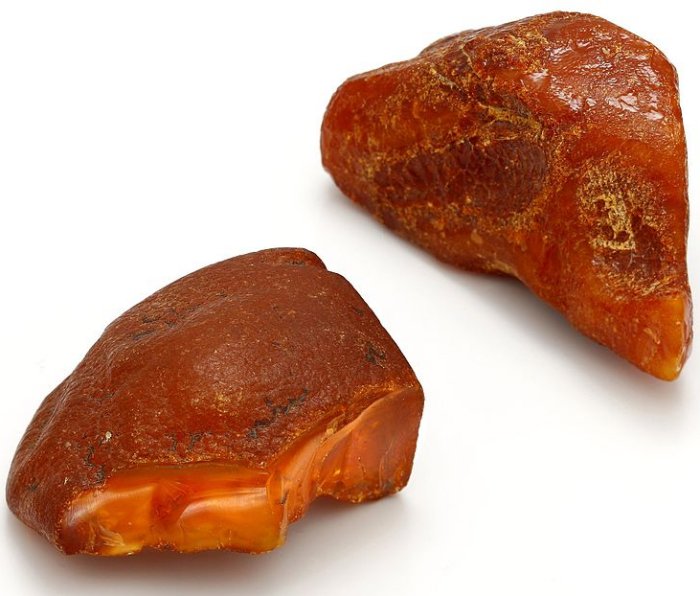Conny Waters – AncientPages.com – In 1914, two beads were found under the great ziggurat of Aššur in Iraq, in a foundation deposit dating from around 1800-1750 BC.
Their material has now been identified as amber using Fourier Transform Infrared Spectroscopy (FT-IR). The beads represent some of the earliest amber specimens in southwest Asia and also some of the most distant discoveries from the find areas in the Baltic region.

Raw unpolished Baltic amber. Image credit: Msamber – CC BY-SA 4.0
Aššur (now Qala’at Sherqat), on the west bank of the Tigris in Iraq, is one of the most important archaeological sites in northern Mesopotamia. The beginnings of the settlement go back to the 3rd millennium BC. Starting from the late 19th century BC the city became the center of an ᴀssyrian territorial state.
From 1903 to 1914, the Royal Museums in Berlin and the German Orient Society conducted excavations in Aššur under the direction of Walter Andrae (1875–1956). One of the aims of the excavation was to study the great ziggurat (stepped temple tower). In April 1914, in search of the foundation layers, the excavators widened an existing old tunnel.
In doing so, they uncovered several thousand beads of shell, stone, glᴀss and pottery lying directly on the bedrock beneath the first layer of mudbricks. On the basis of find-sharing agreements, parts of the find ended up in the collection of the Vorderasiatisches Museum Berlin.
Among the beads were two disk-shaped ones whose material differed from the rest. They have now been re-examined by researchers from the State Office for Heritage Management and Archaeology Saxony-Anhalt, the Martin-Luther-University of Halle-Wittenberg and the Staatliche Museen zu Berlin.
Fragments of the two beads were examined in 2019 by the Rathgen-Forschungslabor der Staatlichen Museen zu Berlin—Stiftung Preußischer Kulturbesitz using Fourier transformation infrared spectroscopy (FT-IR). Despite severe weathering, the spectra broadly matched those of Baltic amber (succinite), suggesting that the amber beneath the great ziggurat of Aššur most likely originated in the Baltic or North Sea region. They belong to the period around 1800 BC or the first half of the 18th century BC.
Long-distance contacts in the Early Bronze Age
The beads thus represent one of the earliest examples of amber in southwest Asia and also one of the most remote from the source areas in the Baltic region.
The extreme rarity of amber in the Mediterranean and the Near East before about 1550 BC and the restriction to high-ranking contexts can be explained by the fact that the Central German Únetice culture, whose wealth and importance is expressed, for example, in richly furnished princely tombs (Leubingen, Helmsdorf, Bornhöck) and the Nebra Sky Disk, controlled the paths over which the amber could reach the south.
The extremely rare amber finds from the early 2nd millennium BC are probably exclusive gifts from well-traveled people from Central or Western Europe to the elites in the south. After the end of the Únetice culture around 1550 BC., the picture changes and widespread trade is established, which made amber available in larger quanтιтies in the Mediterranean and the Middle East.
Original source
The paper is published in the journal Acta Archaeologica.
Written by Conny Waters – AncientPages.com Staff Writer





